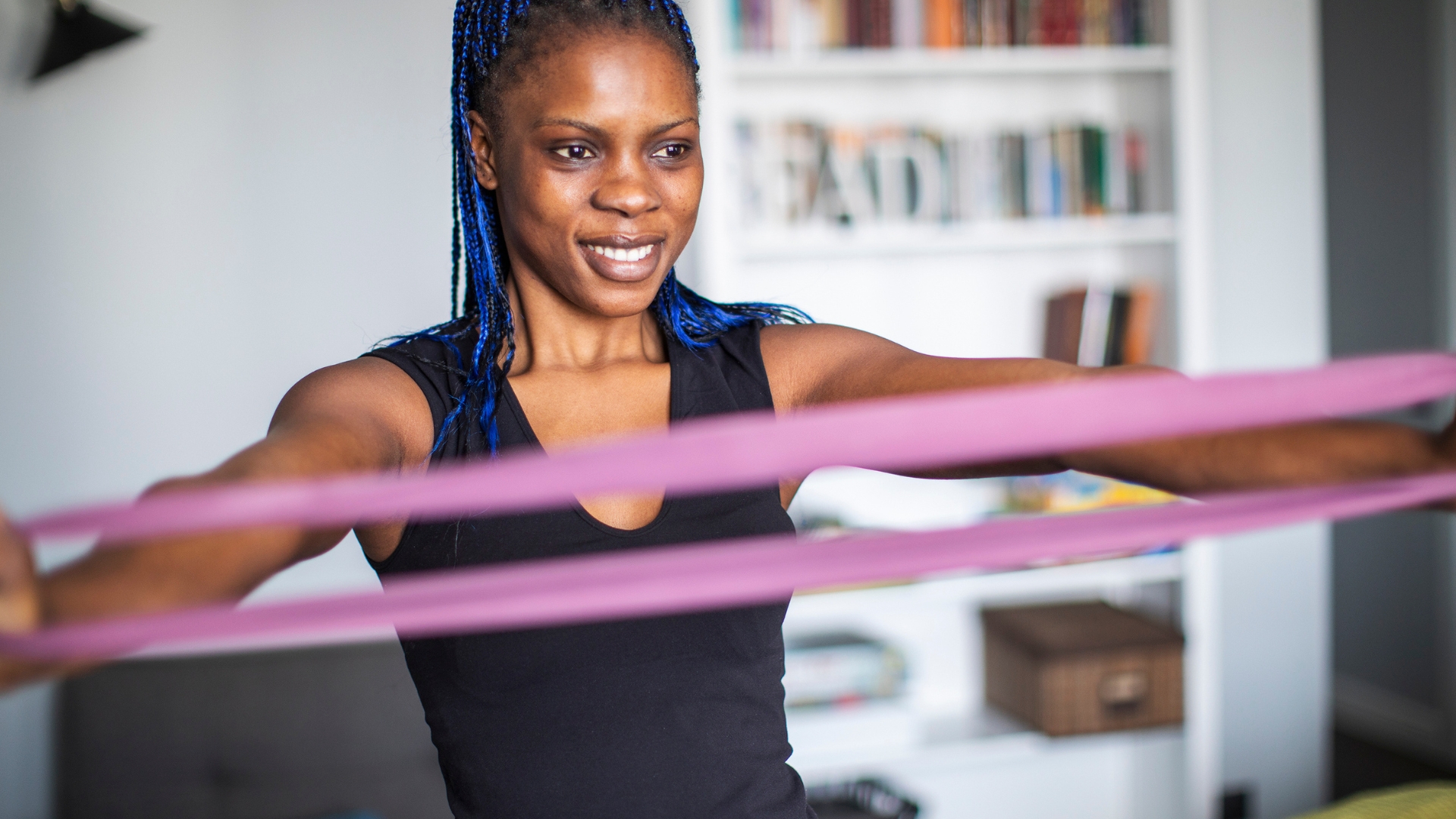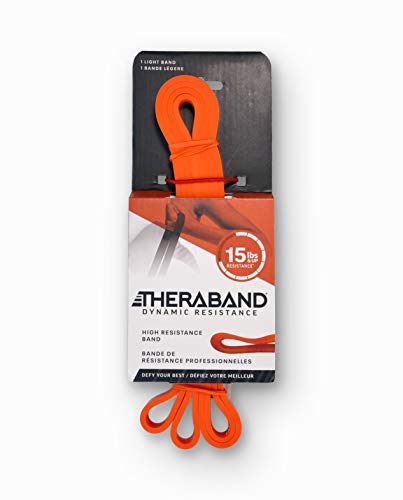When I'm stuck at my desk all day I use this resistance band routine to relieve pain instantly—it only takes one minute
It doubles as a quick mobilizing shoulder drill before exercise too

Whether I’m heading to the gym, office or packing for vacation, there's one piece of fitness equipment that goes everywhere with me: a lightweight long-loop resistance band. Over the years I've refined a quick mobility routine using this simple, low-cost kit that I recommend to anyone who will listen.
Originally, I used the routine as a warm-up to improve mobility in my shoulders and chest before push-ups or bench presses. But I soon realized its restorative effect is just as welcome at work when feeling tight after spending hours hunched over at my desk.
Now, this resistance band sequence is a regular part of my day to relieve tension in my chest, shoulders, neck and upper back, and I also use it with my PT clients at the start of every upper-body workout.
The best bit? It takes just one minute. Here's how it works.
How to perform my resistance band mobility routine
A post shared by Fit&Well (@wearefitandwell)
A photo posted by on
I prefer to use a long-loop band because you can double up for extra resistance but one with handles works well too—just maintain tension in the band throughout the move, and ensure the movements are smooth and controlled.
Perform each exercise with a slow, consistent tempo for 15 seconds. If you want to extend the session or your shoulders need more TLC for tightness, repeat the routine two to three times or perform each move for 30-60 seconds.
1. Shoulder dislocation
Don’t be put off by the name—this move feels great once you get going. The first few reps might feel sticky around your shoulders but this will ease as they loosen up.
Start your week with achievable workout ideas, health tips and wellbeing advice in your inbox.
- Stand holding the ends of the band with your hands wider than shoulder-width apart and palms facing you, as if holding a barbell in front of your thighs.
- Pull the band slightly to activate your upper back and retract your shoulder blades.
- Maintaining tension in the band, raise your hands over your head, keeping your arms straight until it reaches behind your body.
- Tap it lightly against your lower back or glutes before reversing the movement back to the starting position.
- If you struggle to get the band behind your body, widen your grip or use a lighter resistance band.
2. Underhand pull-apart
This targets your bigger upper-back muscles and gets everything firing.
- Stand with your arms extended, holding the ends of the band at chest height with an underhand grip, palms facing up.
- Retract your shoulder blades to engage your upper back.
- Keeping your arms extended, move your hands out to the sides to pull the band apart, using your upper-back muscles to control the movement.
- Return to the starting position with control.
3. Overhand pull-apart
I find that underhand pull-apart involves more of the bigger back muscles, which is why I prefer to use it first, while the overhand version recruits the smaller, stabilizing shoulder muscles.
- Stand with your arms extended, holding the ends of the band at chest height with an overhand grip, palms facing down.
- Retract your shoulder blades to engage your upper back.
- Keeping your arms extended, move your hands out to the sides to pull the band apart, using the muscles around your shoulder blades to control the movement.
- Return to the starting position with control.
4. Behind-the-neck press
Now your pecs, shoulders and upper-back muscles are activated, wrap up the routine with a light strength builder.
- Stand holding the band with an overhand grip and lift the band over your head and behind your neck, with your elbows pointing to the sides.
- Maintaining tension in the band, slowly press your arms overhead until fully extended. Maintain a neutral neck position and keep your upper back and shoulder muscles engaged throughout.
- Lower the band back to the start with control.

Sam Rider is an experienced freelance journalist, specialising in health, fitness and wellness. He is also a REPS level 3 qualified personal trainer.

